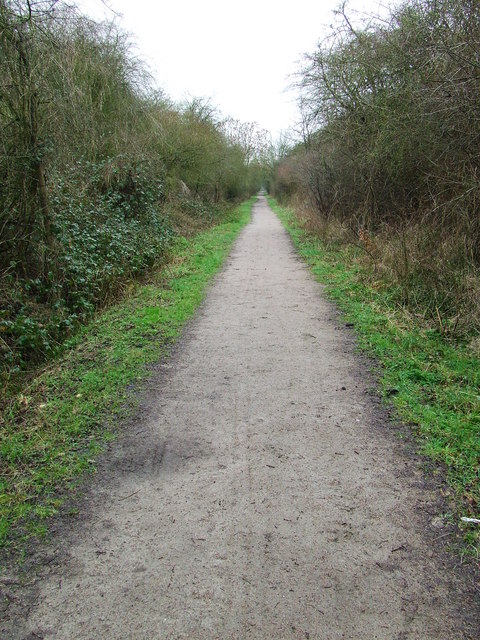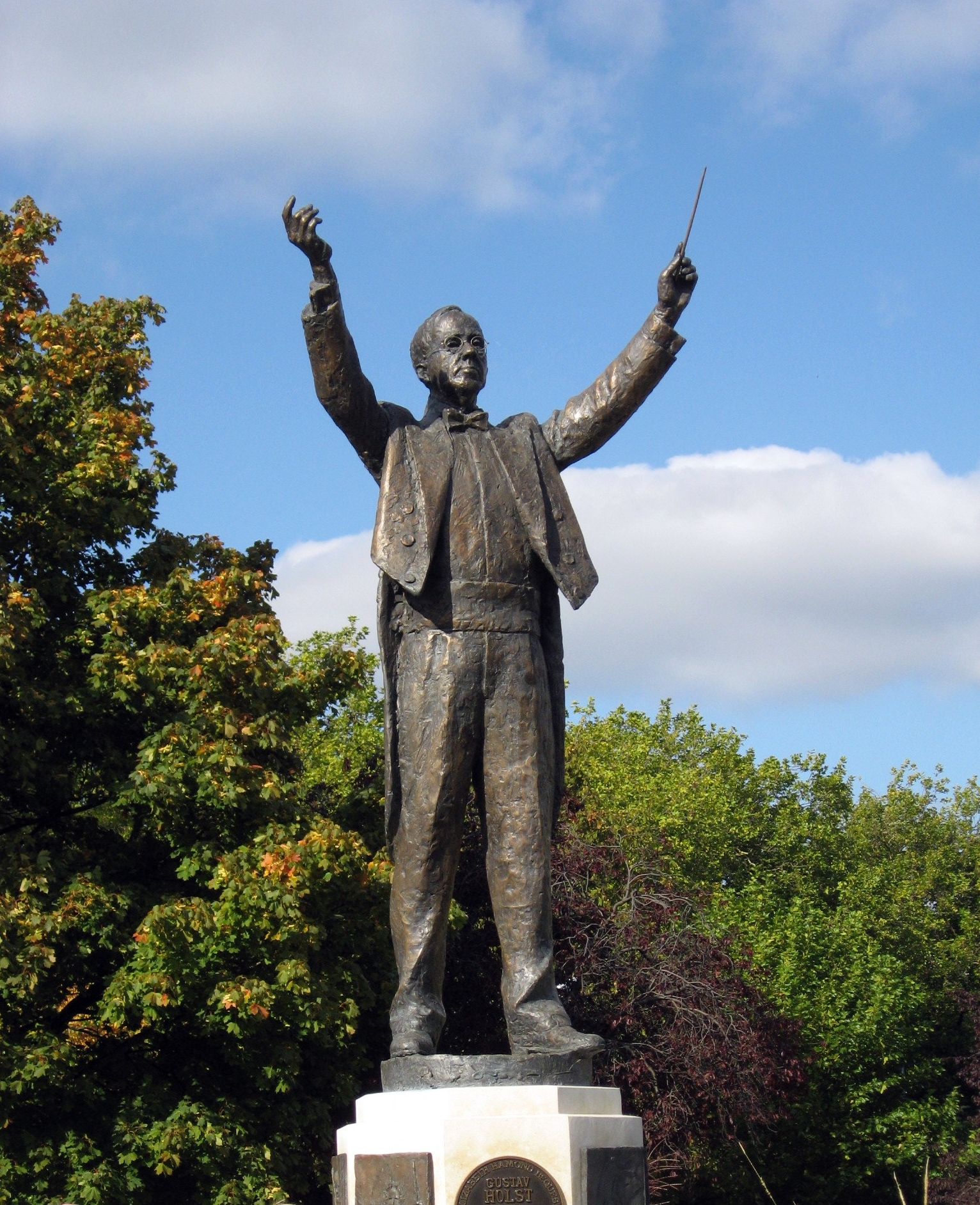|
Monk Street
Monk Street is a hamlet in the civil parish of Thaxted, in the Uttlesford district of Essex, England. It is south of the town of Thaxted, on the main B184 road to Great Dunmow. The name of the hamlet is probably linked to the former Cistercian abbey in nearby Tilty. The composer Gustav Holst rented a thatched cottage in Monk Street from his friend Samuel Bensusan in 1915. It was whilst staying in this cottage that Holst worked on ''The Planets ''The Planets'', Op. 32, is a seven- movement orchestral suite by the English composer Gustav Holst, written between 1914 and 1917. In the last movement the orchestra is joined by a wordless female chorus. Each movement of the suite is named ...'' suite. In 1917 Holst moved to a house in Town Street, Thaxted. The cottage, which dated from 1614, burnt down in the early 1940s. The main A130 trunk road once passed through the centre of the hamlet, but it was bypassed by a road straightening and widening scheme in the 1960s. Refere ... [...More Info...] [...Related Items...] OR: [Wikipedia] [Google] [Baidu] |
Thaxted
Thaxted is a town and civil parish in the Uttlesford district of north-west Essex, England. The town is in the valley of the River Chelmer, not far from its source in the nearby village of Debden, and is 97 metres (318 feet) above sea level (where the parish church stands). The town is north from the county town of Chelmsford, and east from the M11 motorway. The parish contains the hamlets of Cutlers Green, Bardfield End Green, Sibleys Green, Monk Street, and Richmond's Green. Much of its status as a "town" rests on its prominent late medieval guildhall, a place where guilds of skilled tradesmen regulated their trading practices, and its English Perpendicular parish church. History According to ''A Dictionary of British Place Names'', Thaxted derives from the Old English ''thoec'' or ''þæc'' combined with ''stede'', being a "place where thatching materials are got". In the 1086 '' Domesday Book,'' the settlement is referred to as 'Tachesteda' and in subsequent official ... [...More Info...] [...Related Items...] OR: [Wikipedia] [Google] [Baidu] |
Uttlesford
Uttlesford is a local government district in Essex, England. Its council is based in the market town of Saffron Walden. At the 2011 Census, the population of the district was 79,443. Other notable settlements include Great Dunmow, Elmdon, Stebbing, Stansted Mountfitchet, Thaxted, Debden, Little Chesterford and Felstead among other settlements. History Its name is derived from its location within the ancient hundred of Uttlesford,Open Domesday: Hundred of Uttlesford. Accessed 6 January 2022. usually spelled ''Vdelesford'' Open Domesday: Saffron Walden. Accessed 6 January 2022. or ''Wdelesford'' [...More Info...] [...Related Items...] OR: [Wikipedia] [Google] [Baidu] |
Essex
Essex () is a county in the East of England. One of the home counties, it borders Suffolk and Cambridgeshire to the north, the North Sea to the east, Hertfordshire to the west, Kent across the estuary of the River Thames to the south, and Greater London to the south and south-west. There are three cities in Essex: Southend, Colchester and Chelmsford, in order of population. For the purposes of government statistics, Essex is placed in the East of England region. There are four definitions of the extent of Essex, the widest being the ancient county. Next, the largest is the former postal county, followed by the ceremonial county, with the smallest being the administrative county—the area administered by the County Council, which excludes the two unitary authorities of Thurrock and Southend-on-Sea. The ceremonial county occupies the eastern part of what was, during the Early Middle Ages, the Anglo-Saxon Kingdom of Essex. As well as rural areas and urban areas, it forms ... [...More Info...] [...Related Items...] OR: [Wikipedia] [Google] [Baidu] |
Great Dunmow
Great Dunmow is a historic market town and civil parish in the Uttlesford district of Essex, England. It is situated on the north of the A120 road, approximately midway between Bishop's Stortford and Braintree, five miles east of London Stansted Airport. Originally the site of a Roman settlement on Stane Street, the town thrived during the Middle Ages. Many buildings survive from this period, including a 16th-century town hall. Dunmow means "Meadow on the Hill". The settlement was variously referred to as Dunmow Magna, Much Dunmow, or most commonly Great Dunmow. As of 2021, Robert Nicholson is Emeritus Mayor of Great Dunmow. History A Roman small town developed on the junction between Stane Street and the Roman roads which ran northeast to southwest from Sudbury to London and northwest to southeast from Cambridge to Chelmsford. The main settlement area spread westwards from the road junction, with cemeteries on the outskirts. There was a second Roman settlement at Churc ... [...More Info...] [...Related Items...] OR: [Wikipedia] [Google] [Baidu] |
Cistercians
The Cistercians, () officially the Order of Cistercians ( la, (Sacer) Ordo Cisterciensis, abbreviated as OCist or SOCist), are a Catholic religious order of monks and nuns that branched off from the Benedictines and follow the Rule of Saint Benedict, as well as the contributions of the highly-influential Saint Bernard of Clairvaux, known as the Latin Rule. They are also known as Bernardines, after Saint Bernard himself, or as White Monks, in reference to the colour of the "cuculla" or cowl (choir robe) worn by the Cistercians over their habits, as opposed to the black cowl worn by Benedictines. The term ''Cistercian'' derives from ''Cistercium,'' the Latin name for the locale of Cîteaux, near Dijon in eastern France. It was here that a group of Benedictine monks from the monastery of Molesme founded Cîteaux Abbey in 1098, with the goal of following more closely the Rule of Saint Benedict. The best known of them were Robert of Molesme, Alberic of Cîteaux and the En ... [...More Info...] [...Related Items...] OR: [Wikipedia] [Google] [Baidu] |
Tilty Abbey
Tilty Abbey was a Cistercian abbey in Tilty, Essex, England. It was dissolved 3 March 1536. The chapel, with a nave built circa 1220, became a parish church and has survived, with later alterations and extensions. ''An order taken at the late monastery of Tiltey, 3 March 27 Hen. VIII., with John Palmer, late abbot of the same. First, the late abbot and his 5 brethren to remain in the abbey till the King's further pleasure. 11 other items regulating the management of the house by the abbot, who is to retain his 5 servants, named, and continue to support Alice Mills, his mother, Agnes Lucas, widow, and Thomas Ewen, impotent persons. For the finding of which the said Richard Crumwell has delivered to the said John Palmer, at the making of this, 60s., &c. Indenture signed by John Palmer, late abbot. 2. Inventory indented of goods and chattels belonging to the late monastery of Tiltey, made 3 March 27 Hen. VIII. In the vestry:—2 altar cloths of white Bruges satin, with spots like dr ... [...More Info...] [...Related Items...] OR: [Wikipedia] [Google] [Baidu] |
Tilty
Tilty or Tylsey is a village and a civil parish in the Uttlesford district, in the county of Essex, England. In 2001 the population of the civil parish of Tilty was 98. Tilty's church is dedicated to St Mary the Virgin, and is Grade I listed. It was originally a chapel of Tilty Abbey, which was dissolved in the 1530s; the nave was built circa 1220. A further listed building is the derelict Grade II* Tilty Mill, which dates from the early 18th century. Tilty was recorded in the Domesday Book as ''Tileteia''. See also * The Hundred Parishes The Hundred Parishes is an area of the East of England with no formal recognition or status, albeit that the concept has the blessing of county and district authorities. It encompasses around 450 square miles (1,100 square kilometres) of northwes ... References External links * Vision of BritainBritish Listed Buildings Villages in Essex Civil parishes in Essex Uttlesford {{Essex-geo-stub ... [...More Info...] [...Related Items...] OR: [Wikipedia] [Google] [Baidu] |
Gustav Holst
Gustav Theodore Holst (born Gustavus Theodore von Holst; 21 September 1874 – 25 May 1934) was an English composer, arranger and teacher. Best known for his orchestral suite '' The Planets'', he composed many other works across a range of genres, although none achieved comparable success. His distinctive compositional style was the product of many influences, Richard Wagner and Richard Strauss being most crucial early in his development. The subsequent inspiration of the English folksong revival of the early 20th century, and the example of such rising modern composers as Maurice Ravel, led Holst to develop and refine an individual style. There were professional musicians in the previous three generations of Holst's family and it was clear from his early years that he would follow the same calling. He hoped to become a pianist, but was prevented by neuritis in his right arm. Despite his father's reservations, he pursued a career as a composer, studying at the Royal C ... [...More Info...] [...Related Items...] OR: [Wikipedia] [Google] [Baidu] |
Samuel L
Samuel Leroy Jackson (born December 21, 1948) is an American actor and producer. One of the most widely recognized actors of his generation, the List of Samuel L. Jackson performances, films in which he has appeared have collectively grossed over $27 billion worldwide, making him the List of highest grossing actors, third highest-grossing actor of all time. The Academy of Motion Picture Arts and Sciences gave him an Academy Honorary Award in 2022 as "A cultural icon whose dynamic work has resonated across genres and generations and audiences worldwide". Jackson started his career on stage making his professional theatre debut in ''Mother Courage and her Children'' in 1980 at The Public Theatre. From 1981 to 1983 he originated the role of Private Louis Henderson in ''A Soldier's Story'' Off-Broadway. He also originated the role of Boy Willie in August Wilson's ''The Piano Lesson'' in 1987 at the Yale Repertory Theatre. He returned to the play in the 2022 Broadway revival playi ... [...More Info...] [...Related Items...] OR: [Wikipedia] [Google] [Baidu] |
The Planets
''The Planets'', Op. 32, is a seven- movement orchestral suite by the English composer Gustav Holst, written between 1914 and 1917. In the last movement the orchestra is joined by a wordless female chorus. Each movement of the suite is named after a planet of the Solar System and its supposed astrological character. The premiere of ''The Planets'' was at the Queen's Hall, London, on 29 September 1918, conducted by Holst's friend Adrian Boult before an invited audience of about 250 people. Three concerts at which movements from the suite were played were given in 1919 and early 1920. The first complete performance at a public concert was given at the Queen's Hall on 15 November 1920 by the London Symphony Orchestra conducted by Albert Coates. The innovative nature of Holst's music caused some initial hostility among a minority of critics, but the suite quickly became and has remained popular, influential and widely performed. The composer conducted two recordings of the wor ... [...More Info...] [...Related Items...] OR: [Wikipedia] [Google] [Baidu] |
A130 Road
The A130 is a major road in England linking Little Waltham, near Chelmsford, the county town of Essex, with Canvey Island in the south of that county. It is a primary route for most of its length, only losing that status south of the A13 junction at Sadlers Farm roundabout as it nears its terminus on Canvey Island. It was originally a much longer cross-country route (see ''History''). Route The present route can be divided into three main sections, plus an overlap with the A12. The road now starts near the village of Little Waltham (to the north of Chelmsford) at a roundabout with the A131, which heads north-east to Braintree, and the B1008, a former A130 alignment heading south into northern Chelmsford, and north towards Great Dunmow (this section only declassified as recently as early 2008). Either side of this junction, the B1008/A130 route is quite recent, named ''Essex Regiment Way'', and at the Chelmsford end, the A130 intersects with the other routes into norther ... [...More Info...] [...Related Items...] OR: [Wikipedia] [Google] [Baidu] |
Hamlets In Essex
A hamlet is a human settlement that is smaller than a town or village. Its size relative to a parish can depend on the administration and region. A hamlet may be considered to be a smaller settlement or subdivision or satellite entity to a larger settlement. The word and concept of a hamlet has roots in the Anglo-Norman settlement of England, where the old French ' came to apply to small human settlements. Etymology The word comes from Anglo-Norman ', corresponding to Old French ', the diminutive of Old French ' meaning a little village. This, in turn, is a diminutive of Old French ', possibly borrowed from ( West Germanic) Franconian languages. Compare with modern French ', Dutch ', Frisian ', German ', Old English ' and Modern English ''home''. By country Afghanistan In Afghanistan, the counterpart of the hamlet is the qala ( Dari: قلعه, Pashto: کلي) meaning "fort" or "hamlet". The Afghan ''qala'' is a fortified group of houses, generally with it ... [...More Info...] [...Related Items...] OR: [Wikipedia] [Google] [Baidu] |





